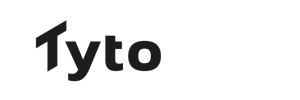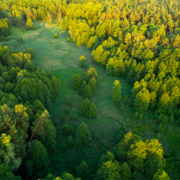Champions of Content – Q&A with Abs Gandhi & Magdalena Nowak from Snowflake
Welcome to the newest entry in our series: Champions of Content
Content is integral to the way brands are understood and seen by their audiences, but developing content for different audiences, on different channels and even in different languages can be very complicated to get right.
In Champions of Content, we’ll be speaking to passionate content creators we admire including marketers, journalists, writers, podcasters, and speakers about their experiences and sharing the wisdom to help others on their own content journey – whether your first putting pen to paper or looking to level up your content strategy.
In our first joint interview of the series, we spoke to a marketing and communications duo from Snowflake, a global brand known for revolutionising the data analytics space. The business has gone from strength to strength in the last decade, especially following its huge IPO in September 2020, and increasingly caters to a wide range of industries and use cases – from startups to large enterprises – which has created exciting new challenges from a communications perspective.
Magdalena Nowak is the senior field marketing manager in Germany for Snowflake and has over a decade’s experience in marketing and business development. Prior to joining Snowflake, she worked for Workday and LinkedIn.
Her colleague, Abs Gandhi, is Snowflake’s PR manager for EMEA, responsible for leading the brand’s media efforts across the region. Prior to joining Snowflake, Abs was a senior account manager for the integrated comms agency Zeno London, and previously worked at PR agency Spreckley.
In this edited conversation, the pair discuss ChatGPT, the importance of knowing your audience and what makes good content.
To start, Magdalena and Abs, please tell us what role content plays in your work today?
Abs: Content has always played a very important part in my career, having been in technology PR for close to eight years. It’s a key way of driving positive brand awareness for clients that I’ve represented or in-house now in my role at Snowflake. It’s an important tool.
Content is always ultimately important for pushing the agenda of a client or a company, but it’s also a way of nailing down what’s important to the wider marketplace and positioning brands at the heart of important topics.

Magdalena: Content is what distinguishes you from your competitors, as well as from everyone else you’re working with. In my case, looking after the German market specifically, I really want to know my target group. I research them to understand what they want to read and hear. From a German point of view, content is so critical because we’re a country of engineers. You can’t just share a fluffy marketing slide and expect everyone to buy; you need the content to tell people why this product is beneficial to them on both a business and a technical level. And that’s why I’m 100% sure that content is the most important part of your marketing and PR communications.
We all want our content to stand out, what do you think are the main ingredients that make one piece of content stand out above another?
Abs: We often see content without any evidence to back up or support some of the claims made, or it may be really vendor heavy.
The main thing that separates good content is having a clear argument, and a clear definition of that argument that taps into what audiences want to hear, or haven’t yet heard. It needs to be genuine; you can’t make things up because that’s what you think the audience wants to hear. You need evidence and facts to support your claims.
In EMEA, the content that works best is responding to media trends and providing practical business advice. It’s important to try and predict those trends and get ahead of them, rather than just jumping on the bandwagon.
Magdalena: My advice is: if you have nothing to say, say nothing. You can’t just do a Google search and build buzzwords into your content.
When you produce content, think about the people who will invest their time into reading what you have to say. Make it simple, structured, and have your facts straight. Don’t just repeat buzzwords. If possible, include a related real-life example. Creating a package written in an appealing style will show that you value the time your reader is giving to you.

What are some of the challenges you face when producing content for different channels and audiences, and how do you deal with these? Here at Tyto, we often navigate the complexity of developing content for different audiences in different countries.
Abs: One challenge I’ve faced is that what may be important internally isn’t always the best content for external audiences. You need to think about what is important to the company that also will be important to external audiences as well, that isn’t too vendor heavy. This is especially true for thought leadership content which needs to find a middle ground and be more neutral.
One thing we’re seeing is that there are lots of themes that are important in EMEA but less so in North America or APAC. Themes like data security and governance, as well as ESG, are front of mind for European businesses right now.
Then there is the challenge of taking quite technical content, like our Snowpark Developer Framework, which is important to our company and customers, and packaging it in a way that will draw the interest of a wider audience that can understand it’s business impact.
Magdalena: Let’s say we’re working on a pan-EMEA survey on a given topic. What I need for my market is to know how Germans compare to the rest of Europe. What differences are there? Are we able to see certain patterns in the data, and what is the explanation for those patterns and differences?
That’s important because you need to make your content relevant to your reader. You want it to resonate with your target audience. In many cases, that means the reader needs to be able to see themselves in the story to identify with it. So having those datasets on different groups of people, as opposed to lumping all Europeans together, helps people to identify with what you’re writing. That is a challenge, but it is a challenge worth taking on.

Are you excited by AI and ChatGPT, and if so where do you see the greatest potential to harness it in the development of content, now or in the future?
Magdalena: It is super exciting and I urge everyone to try using it. You’ll be amazed by how good it is, but you’ll also see where there are limitations. Simply using ChatGPT will not give you a perfect piece of writing. You need to learn how to use it and speak to it, otherwise the results it produces will not be great.
I’ve been using it in a variety of ways, such as helping me to write a letter. I’m not making myself redundant, I’m just using technology to get an idea of what I could say or ideas that I might not have considered. It can give you a structure you can build on for a piece of content, helping you to become better at what you do every day. That’s the magic behind ChatGPT.
Abs: These tools are great for information gathering, but they are missing the human touch. You need to use your own intuition and knowledge to wrap all this information in a digestible way that is focused to your target audience. I’ve heard of PRs using ChatGPT to write pitches, and clearly that takes away the human touch; journalists are going to see straight through those pitches.
I am worried about the amount of people putting sensitive content into these tools too. There is a real risk of losing IP if you’re not using it carefully.

For brands or individuals planning to level up their content in 2023, what would be your top bits of advice for how they can increase the impact of their content? What should they be thinking about and looking at? What are you thinking about?
Magdalena: Think about who you are talking to. Are they young or old? Are they a technical person or a business person? Never lose sight of who you are talking to, and adapt what you are saying to how these people consume news and information. If you do that, everything else will fall into place.
Abs: One thing I see quite a lot is quoting too many different research pieces within an article. I advise against this, otherwise it ends up reading as “this company said this, and this company said that.” You don’t need that many quotes of different research firms. Strip it back and only include something that’s worth including. Otherwise, your content will end up becoming a listicle and read really badly. The more of that kind of content you produce, the more bored your readers will become and the less likely they will be to take notice of your company in the future.
Instead, you need a well-defined argument. Plan what you want to say and make sure it has a lot of weight. By creating a plan or framework for your content, the easier it will be to write the final piece.
For our final question, how do you measure the success of your content?
Abs: Coverage is key. How much coverage are we achieving with a piece of content? Where is that content landing? If it’s a long-form piece of content, it’s probably only going to be in one publication, but is that the right publication for our target audience? If it’s a piece of research, how many hits are we getting?
Social awareness is also important. Social media like LinkedIn can be a great vehicle for accelerating content to a wider audience, especially in the B2B world. Sharing a piece of content on social media can increase its impact and lead to more engagement.
Magdalena: You always want to know your return on investment and understand what you got in return for creating a piece of content. That’s why you measure how many pieces of coverage you received or likes on social media. But another, perhaps less quantifiable benefit is, how scalable is the content? If Abs produces something, how can I leverage it in my own content and campaigns, and vice versa? Scaling content in this way ensures you can do more with less and avoid wasting resources.











